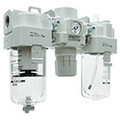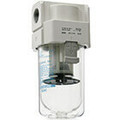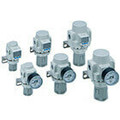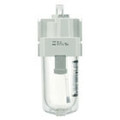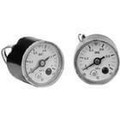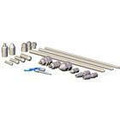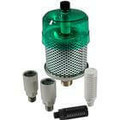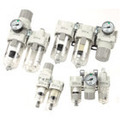Airline equipment plays a crucial role in ensuring the smooth and efficient operation of aircraft. Among the various systems employed in aviation, pneumatic systems are widely utilized.
Pneumatic systems, commonly known as air systems, harness compressed air to power essential components and mechanisms on board an aircraft. At Orange Coast Pneumatics, we offer an expansive selection of pneumatic components for aviation equipment.
Find the best solutions for your operations, here. Then, continue reading to explore the purpose, applications, and benefits of pneumatic airline equipment.
What are Airline Pneumatics?
Pneumatic systems utilize compressed air to perform various functions in aviation.
These systems are vital for critical operations, including (but not limited to) autopilot and de-icing systems.
By harnessing the power of compressed air, airline pneumatics enable the precise and controlled movement of aircraft components and ensure the aircraft's safety and performance.
What Pneumatic Systems are Used in Aerospace Activities?
Aircraft pneumatic systems incorporate components that are essential for specific aerospace activities. These systems serve critical functions such as controlling the cabin pressurization, operating air brakes, powering hydraulic systems, and adjusting the altitude of the aircraft.
By employing pneumatic technology, these systems allow for efficient and reliable operation. This ensures the safety and functionality of various aircraft systems.
Pneumatic Airline Equipment: FRL Units in Aviation
One essential component of pneumatic airline equipment in aviation is the Filter-Regulator-Lubricator (FRL) unit. FRL units serve a crucial purpose in maintaining the quality of compressed air.
They effectively filter out impurities, regulate air pressure, and provide lubrication to moving parts. By ensuring clean and properly pressurized air, FRL units contribute to the longevity and efficient operation of pneumatic systems.
In turn, this minimizes the risk of malfunctions and maximizes overall aircraft readiness.
Pneumatic Airline Equipment: Pressure Regulators in Aviation
Pressure regulators are another vital element of pneumatic airline equipment in aviation. These devices enable precise control of air pressure, allowing for the smooth operation of various aircraft systems that rely on compressed air.
Pressure regulators ensure that the air supplied to different components remains within specified limits, preventing damage due to excessive pressure. By maintaining optimal pressure levels, these regulators enhance the reliability and performance of pneumatic systems.
Pneumatic Airline Equipment: Silencers & Exhaust Cleaners
In the realm of pneumatic airline equipment, silencers and exhaust cleaners play an essential role in reducing noise pollution and ensuring environmental friendliness. Silencers effectively attenuate the noise produced by pneumatic systems, providing a quieter and more comfortable cabin environment.
Exhaust cleaners, on the other hand, mitigate the emissions from pneumatic systems, minimizing their impact on the environment. These features are particularly valuable for maintaining a low-profile presence while ensuring responsible and sustainable operations.
Find Airline Pneumatics for Your Business at OC Pneumatics
Now that we have explored the purpose, applications, and benefits of pneumatic airline equipment, it's time to find the best solutions for your specific needs. At OC Pneumatics, we provide a wide range of high-quality airline pneumatics.
Discover our extensive selection of FRL units, pressure regulators, silencers, and exhaust cleaners. To find the right airline pneumatics for your systems, reach out to our team today.

